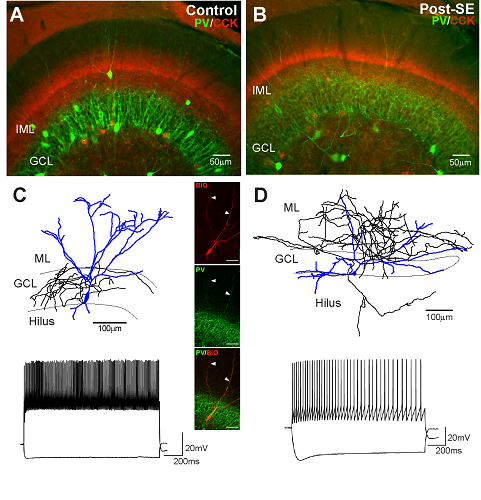Temporal lobe epilepsy, the most common epileptic syndrome, often develops following early unprovoked seizures The hippocampal dentate gyrus acts crucial functional gate limiting reentrant activity is at the heart of structural and functional changes in underlie temporal lobe epilepsy. We have focused on the perisomatic network of GABAergic interneurons which regulate the excitability of dentate projection neurons, the granule cells. Our studies have identified specific post-seizure changes in interconnections between Non-fast piking cannabinoid sensitive interneurons and Parvalbumin-expressing fast spiking interneurons which disrupt network rhythms critical for memory processing. Our studies use a combination of paired whole-cell and cell-attached physiological recordings, immunohistochemistry and in vitro optogenetics to determine the nature of seizure induced changes in interneuronal microcircuits and large-scale computational modeling to identify the network consequences of the changes. Recently, we have focused on dentate semilunar granule cells, a novel class of excitatory dentate cell projection neurons with distinct inhibitory regulation than the classical granule cell circuits. Ongoing studies are examining dentate microcircuit regulation of semilunar granule cells and specific classes of inhibitory neurons. Overall, these studies are expected to identify fundamental mechanisms underlying the dentate circuit function in memory processing and in development of epilepsy and co-morbidities such as cognitive and memory dysfunction.
Past and Current Funding: Epilepsy Foundation EF160706, NIH/NINDS R01NS069861

